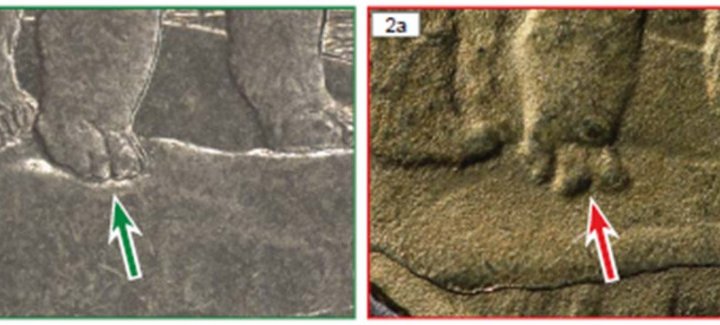There are several ways Canadian consumers can spot fake toonies circulating across the country, coin experts say.
The coins’ appearance, their weight, as well as die strike errors and even die misalignments can give them away as counterfeit $2 coins.
The counterfeits are suspected of being made in China, the RCMP has said.
The cost of raw materials and manufacturing costs are low enough in China to make the criminal venture profitable there, law enforcement and counterfeit coin experts said.
The case of Daixiong He in Toronto involved a mass-produced fake – not by He – which was spotted because of the erroneous split-toe design on the polar bear’s paw and a special probe by the RCMP and Royal Canadian Mint.
That fake coin shows the polar bear with what looks a camel’s hoof, not a paw.
That’s why it became known as the “camel-toe toonie.”
A Quebec man, Jean-Francois Genereux, was convicted this year of importing more than 26,000 fake toonies himself, ordering them himself on the Internet direct from a Chinese metal maker, to be imported into Canada and delivered by courier.
Get weekly money news
Get expert insights, Q&A on markets, housing, inflation, and personal finance information delivered to you every Saturday.
Genereux was sent to jail this year after he was caught by Canada Customs Border Services Canada.
A Canada Border Services officer seized these counterfeit toonies from China at Montreal-Mirabel International Airport in January, 2023. A Quebec man was convicted for importing more than 26,000 of the fake coins, which he paid .5 cents ech to have made.
CBSA
A year ago, Global News learned that Genereux’s fakes were the same as a new $2 fake coin circulating as far as Northern Ontario.
It also has some unique design flaws that ordinary consumers can spot.
An Ontario counterfeit coin expert explains how to identify features of a new variety of fake $2 coin circulating in Ontario and Quebec.
Photo Illustration: Mike Marshall
That batch of fakes displayed a 2012 year on the counterfeit coin.
Other distinctive flaws that allow this coin to be spotted as a fake toonie with the naked eye include:
- The Queen’s nose is too sharp and long on the fake coin’s head side.
- Above the Queen’s head, a maple leaf-shaped security feature appears on the fake coin but does not actually appear on genuine toonies from 2012.
- On the polar bear side of the fake coin, a “$” symbol appears between two maple leaf-shaped security features. On the real coin, the numeral “2” actually appears in that spot.
- Also on the polar bear side, on the right side near the bear’s head, the word “CANADA” appears on the fake coin. On the real coin, the word “DOLLARS” appears in that space.
- Lastly, the “2012” year on a real toonie appears in a straight line, while the same numbers appear on a curve or slight arc on the counterfeited coins.
An Ontario counterfeit coin expert explains how to identify features of a new variety of fake $2 coin circulating in Ontario and Quebec.
Global News
Other fake $2 coins now include other years too, such as 1996, 2002, 2004, 2005 and 2006.
A genuine toonie made between 1996-2011 weighs about 7.31 grams.
Counterfeits featuring the same years weigh in at 6.99 grams, according to Brent Mackie, who created the camel-toe fake toonie educational fake coin website.
To see more fake $2 coins that Mackie and fellow coin collector experts have spotted, visit: BWJM.ca Counterfeit Toonies Catalogue
These crude counterfeit $2 coins circulated in 2022 before they were seized by Ontario Provincial Police.
Ontario Provincial Police
© 2024 Global News, a division of Corus Entertainment Inc.


